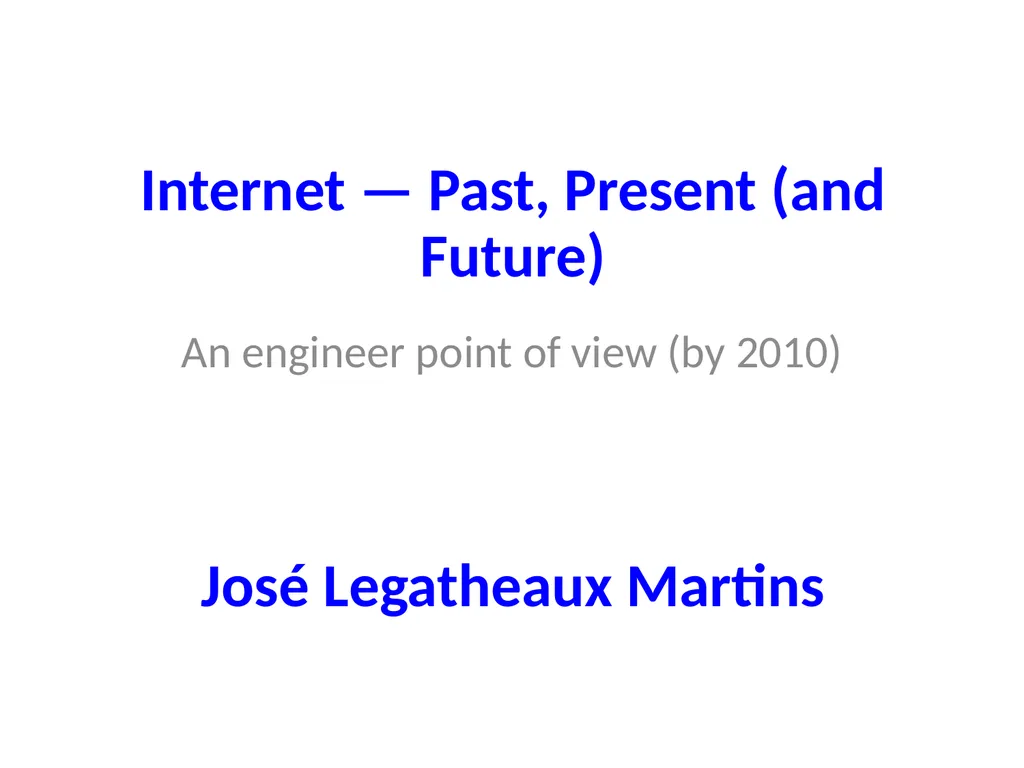
Internet — Past, Present (and Future) José
Author: briana-ranney | Published: 2025-08-04
Description: Internet Past, Present (and Future) José Legatheaux Martins An engineer point of view (by 2010) Internet How big is it today How it was born and has grown, including in Portugal Why is it different What main challenges does it faces in
Download Presentation
Download the PPT/PDF: Download
Transcript:
Loading transcript�